Contents
Winter wheat is a familiar combination of words, but the expression winter onion is surprising to many. But today, various crops are successfully planted in the fall, and onions are no exception. Winter onions will provide the gardener with an earlier harvest, and small sets or samples with such a planting will benefit, and will not die in anticipation of spring.
Variety description
Of course, not every variety of onion and garlic is able to survive the winter cold, but breeders have tried to develop varieties and hybrids that can be dormant in the ground under snow, but grow in conditions of not too long daylight hours. Shakespeare bulbs are able to withstand frost down to -18о, so it is most often used for planting in the fall. It is unpretentious, does not require special care, the crop can be harvested in 70-80 days.
The bulb itself is round with white flesh and brown integumentary scales. Varieties “Radar” and “Ellan” are characterized by good germination, excellent taste, early ripening. So “Ellan” can be consumed already in June, when spring onions and garlic are still growing, and last year’s harvest is over. Turnips of medium size (100-150 g), and “Radar” with good care can please even large ones – up to 300 g.
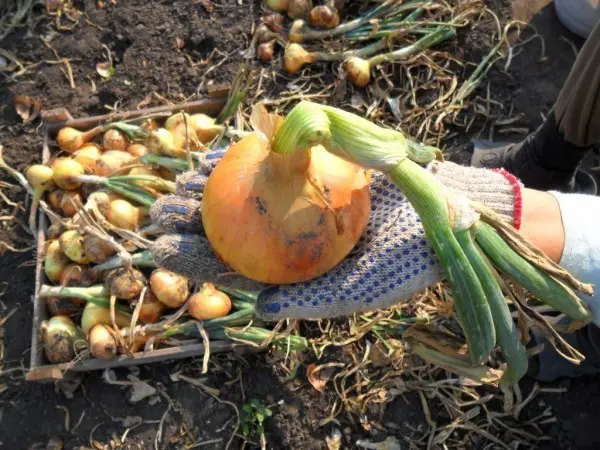
Such winter varieties “Sturon”, “Baron”, “Centurion” enjoy well-deserved popularity. It takes 2-2,5 months from the beginning of the regrowth of the sevka to full maturation. “Sturon” is perfectly stored for at least 8 months, and “Centurion” is distinguished by a high content of vitamin C and a spicy taste.
Somewhat flat fruits of golden brown color with a sharp taste of the variety “Studgarten Riesen” ripen in 2 months and grow up to 150-200 g. The name of the “Kip-Well” variety speaks for itself: it is preferred to be grown for long-term storage. It has the same elongated bulb shape as the Bamberger variety, but is slightly larger. Winter onions of these varieties have proven themselves to be unpretentious in care and convenient for planting in the fall.
Garlic and onions planted before winter are distinguished not only by early ripening, but even larger turnips. The fact is that winter onions, like garlic, begin to grow earlier than spring ones, they do not miss a single bright warm day for growth and development. Until about mid-May, there is still enough moisture in the ground for its growth, so until this time it does not require special attention, which is also very convenient.

Planting and care
At the end of summer, onions are harvested, sorted out, and sent for storage. For planting in the spring, a set of 1-1,5 cm in size is selected, and one that is less than 1 cm dries up before spring, it is better to plant it in the fall – then it will not only not disappear, but also will please the owners with an early harvest. Yes, the germination of garlic and onions after planting in the fall is somewhat less than in the spring, but already rejected sevok is planted before winter – the owner does not lose anything. And if you take special varieties for winter plantings, then you won’t have to complain about germination.
The soil does not need to be specially prepared before planting, the bed can simply be removed from the previous plantations, dug up and left alone. According to the crop rotation rules, onions (like garlic) cannot be grown in one place for more than 2 years, after which there should be a break of 5 years. . If the soil was fertilized before planting, this will be enough.
A place for an onion bed is chosen unshaded, preferably on a hill, you can pour a high bed as soon as the earth is free, you can even mix ash into it – this will be the only fertilizer in the fall. Onion sets are planted on a turnip, the neck is not cut before that, grooves are marked at a distance of 15-20 cm, the bulbs are deepened by 3 cm at a distance of 8-10 cm from each other. Then they are covered with light earth and slightly crushed. It is impossible to plant deeply, because in the spring the onion (or garlic) will not have enough strength to break through the hardened soil.
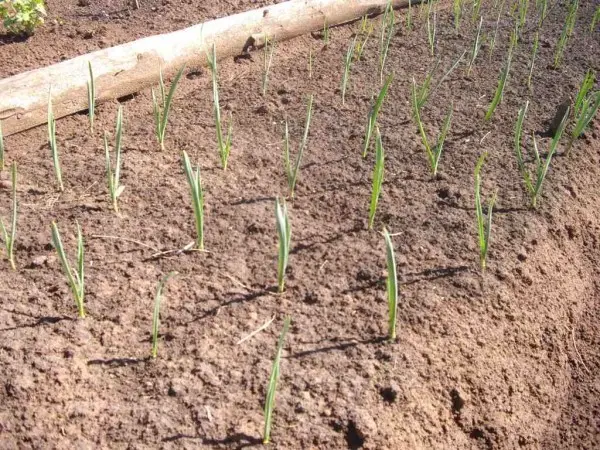
If the gardener wants to get an early green feather, then he plants a selection, that is, bulbs that are too large for a set (or too small for a turnip). They are buried in much the same way, but they can be planted more often – after 5-8 cm, there is no need to leave room for a growing turnip. After planting, there is no need to specially water, but you need to close it before frost. To do this, use branches after pruning trees and shrubs, dry leaves or tops of legumes. They will cover the plantings during the first frosts, hold back the snow, and help to winter.
And in the spring, as soon as the snow melts and the earth begins to warm up, this old covering material must be removed, to allow the sun to reach the seedlings starting to grow. After the emergence of seedlings, when the earth has already warmed up, it is advisable to mulch the bed in order to maintain sufficient heat and moisture, and protect it from overheating.
Early shoots can be covered from frost with agro-cloth – it keeps heat well, but transmits light, it does not need to be removed during the day and laid at night, like plastic wrap. It is recommended to feed with highly diluted mullein, nitrogen fertilizers along with watering. The first time this is done immediately after the emergence of shoots, the second – after 2 weeks.
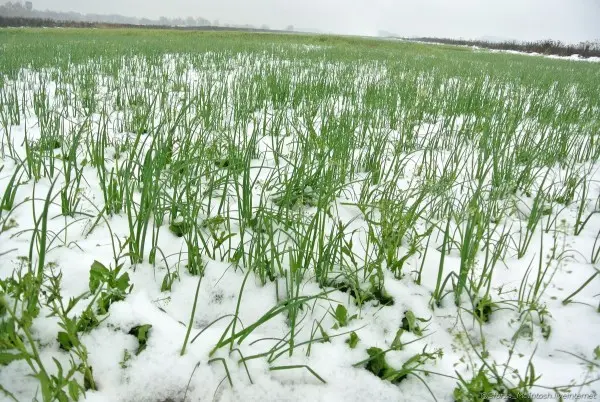
Experienced gardeners say it’s better to underfeed than overfeed. Care for growing onions consists in timely watering (very careful, it is better to under-water, but not to overdry), loosening the soil (it should be light enough and let air through to the roots), weed and pest control. After watering and loosening the ground, it would be good to mulch it – this will reduce further labor costs.
Growing time
It is believed that winter onions grow in the spring, and spend the winter at rest, this is not always the case, planting dates determine the growth time. Early planting is done in August-September, if the land is dry, then it needs to be watered, at such times the onions are planted in important land, because growth will begin before winter. Before frost, 5-6 leaves will have time to grow, which must be covered with special covering material or at least branches and leaves. This is how onions are grown, in the spring it will soon begin to grow a turnip, but the leaves may well overwinter without suffering from frost.
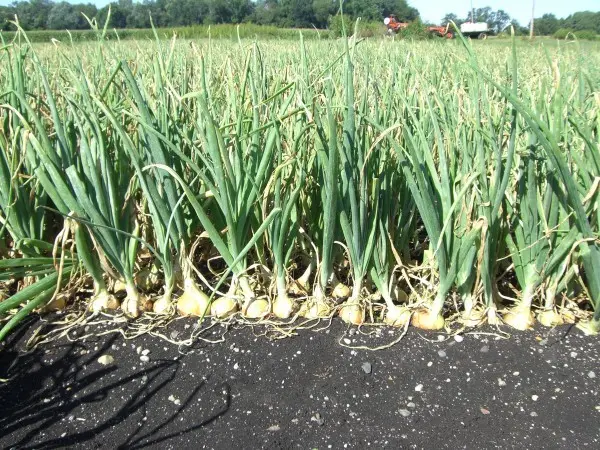
The most common planting dates are September-October. The bed has been cleaned and prepared for a long time, it’s good if it rested for a month (well, at least a week), the soil has subsided. At this time, the plantings are not watered, it does not matter if it rains, but you should not specially moisten the soil – otherwise the onion may rot.
Late plantings are carried out a month before the arrival of frost. It can be October-November, and in the southern regions even later. Here you need to be guided by the weather conditions of your region. Well-dried sevok is planted in dry ground, plantings must be mulched, covered with special material for the winter.
Onion ripening occurs in accordance with the weather, care and plans for each variety separately. Winter always ripens earlier than planted in spring. Remove it before the neck dries.
Video “Details about the technology of growing winter onions”
In this video you can hear all the details about growing winter onions.
Protection against pests
Whatever happens to onions – diseases, pests – you need to remember that onions grown on a feather cannot be treated with pesticides. After potatoes, parsley, celery, alfalfa and clover, you should not plant onions – you can get a nematode. It is best if in the garden, which was planned for winter onions, such crops used to grow: tomatoes, cabbage, peas, beans, radishes, carrots, beets. But after them, the land should rest for 1-4 weeks before planting winter onions.

A dangerous pest for onions of all varieties is the onion fly. She appears in the garden in mid-May to lay her eggs on the onion and the ground next to it. During the summer, at least 2 generations of flies misbehave in the garden. Their larvae crawl into the bulbs, causing decay.
Against them, onions are treated with organophosphate fertilizers (imide, thiactopride). You can add granular preparations (bazudin, phosphamide) to the soil on the onion bed. Crop rotation will prevent onion fly larvae from accumulating in the soil, at least, so you should follow its rules.
If plants are affected by peronosporosis, they will lag behind in growth, their leaves will dry out in dry weather, and in wet weather they will be covered with a gray-violet bloom. To prevent this disease, they are treated every 12-14 days with contact fungicides (copper oxychloride, oxychom). In rainy times, this interval is reduced to 7-8 days. If the disease could not be avoided, systemic fungicides (Acrobat MC, Ridomil MC) will have to be used, then they will need to be alternated. Winter onions have no more pests and diseases than those planted in spring, the fight against them is the same.
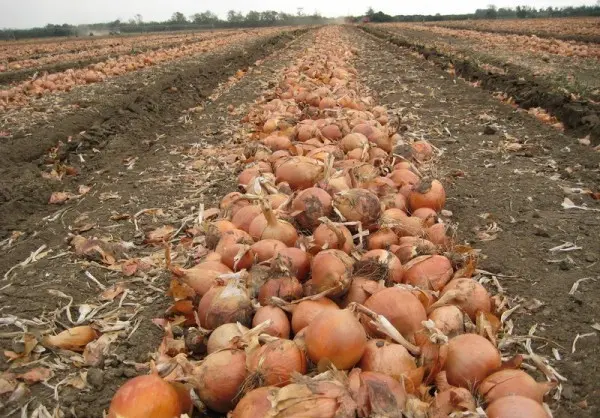
Video “Planting winter onions”
From this video you can learn the details of planting winter onions.









